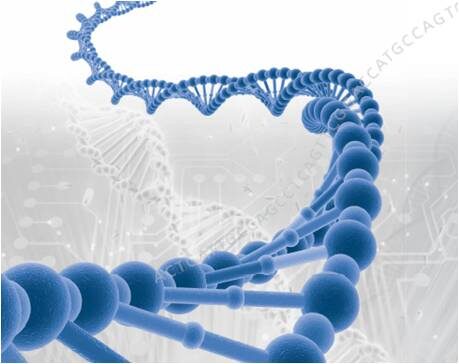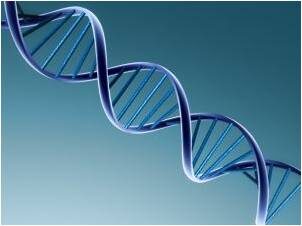Steve Matheson wrote a “review”:
mixing frequent personal attacks on Meyer with exposes of occasional typos and the possible discovery of one minor error….
Matheson is noteworthy because he at least gives every indication that he’s reading Signature in the Cell before attacking its author. It would have been preferable for Matheson to have read the book entirely before rendering judgment. But when it comes to many other critics of Signature in the Cell on the internet, this is progress…
Unfortunately, Matheson feels it necessary not just to critique SITC but to smear it as “not a serious work of scholarship,” not “serious science,” “awfully bloated,” potentially “a joke,” “disingenuous,” “sad,” “pathetic,” and “fluffy and vacuous, simplistic at best and not infrequently wrong or misleading.”
In case you didn’t get the point, Matheson accuses Meyer of “some combination of ignorance, sloth, and duplicity,” using tactics that require “layers of dishonesty” that is “sufficient to justify a charge of deliberate dishonesty.”
Matheson also noted that it was “pathetic” that he was “disgusted” and that it was “embarrassing” yet:
Like a judge who issues a verdict after only reviewing half the evidence, Matheson is prematurely accusing Meyer of misrepresenting origin of life thinking. What’s ironic is that by accusing Meyer of creating a straw man and ignoring SITC’s much more comprehensive argument, it’s Matheson who is promoting the straw man. Is this really the best critique possible from someone who is actually reading SITC?
Mathematician and software engineer Mark Chu-Carroll,
called Stephen Meyer’s Signature in the Cell “a rehash of the same old s—t,” even though he admitted, “I have not read any part of Meyer’s book.” Chu-Carroll further decried the “dishonesty” of Meyer, whom he called a “bozo” for merely claiming that DNA contains “digital code” that functions like a “computer.”
Well, Mark Chu-Carroll is quite right in that DNA does not function like a computer. Rather, computers function like DNA—albeit on a much, much, much more primitive level.
This section of Signature of Controversy goes on to provide evidence of the ubiquity of references in the literature to correlations between software and genetics. Mike Gene also provides ample evidence of this in his book, The Design Matrix: A Consilience of Clues (find it here).
Note also that it has since come out that Steve Matheson agrees that “design is an excellent and irrefutable explanation” but rejects it on philosophical grounds such as the faith in a future hope of finding a materialistic explanation (see Robert Crowther, Which Steve said “design is an excellent and irrefutable explanation”?).

Much like Steve Matherson, Darrell Falk has a prior commitment to materialism:
for Professor [Darrell] Falk, drawing any negative conclusions about the adequacy of purely undirected chemical processes or —worse—making an inference to intelligent design, is inherently premature. Indeed, for him such thinking constitutes giving up on science or making “an argument from ignorance.” But this betrays a misunderstanding of both science and the basis of the design argument that I am making.
Darrell Falk has a,
commitment to finding a solution to the origin of life problem within a strictly materialistic framework…[he and his colleagues] accept the principle of methodological naturalism, the idea that scientists, to be scientists, must limit themselves to positing only materialistic explanations for all phenomena. Of course, it is their right to accept this intellectual limitation on theorizing if they wish. But it needs to be noted that the principle of methodological naturalism is an arbitrary philosophical assumption, not a principle that can be established or justified by scientific observation itself.
But does Steven Meyer presuppose that a materialistic explanation will never be found?:
The public rebuttals of Signature in the Cell may be inadequate, but does this mean that materialists will never explain the origin of information in the cell? Not at all. In scientific debates, one must always remain open to future discoveries. But the showing thus far does mean that intelligent design deserves serious scientific consideration—not abrasive quips, dismissals, and refusals to engage Meyer’s arguments…
many reviewers unashamedly boasted of not having read the book (or wrote rebuttals so far askew from Meyer’s argument that one could not help but question whether they had).
Referencing books/movies such as Carl Sagan’s (find info on Sagan here and here) Contact with reference to detecting information:
we would quickly lose interest in the plot if, say, in every scene where a scientist appeared before an important governmental group and said, “The outer space signal contains over sixty thousand, multidimensional pages of complex architectural plans,” she were countered with, “This is exactly the predicted outcome of billions of years of cosmic evolution—you see, random interstellar events lead to just this kind of complex specified information…we are not impressed.” We would want our money back.
Reviews written by an anonymous blogger who goes by the pseudonym “RJS.”
I’m guessing that RJS is a scientist, or is in a sensitive academic position, and doesn’t want to risk banishment for saying reasonable things about an ID argument. If so, that tells us something of the social pressures against writing publicly about this issue.
This is actually a good point as was elucidate in the movie Expelled: No Intelligence Allowed, by Philip S. Skell (member of the National Academy of Sciences and Emeritus Evan Pugh Professor at Pennsylvania State University) who warns students that if they have doubts about the ruling biological orthodox-Darwinism they should keep their concerns to themselves for, the very real, fear of being blacklisted and risking their grades and or careers. And on it goes.
Back to Francisco Ayala, as his objections go from the biological to the theological:
Ayala proclaimed that ID is tantamount to “blasphemy” because it implies that God is responsible for “design defects,” such as tsunamis, back aches, misaligned teeth, and complications encountered during childbirth. Ayala’s argument for Darwinism is almost entirely theological: “people of faith would do better to attribute the mishaps caused by defective genomes to the vagaries of natural selection and other processes of biological evolution, rather than to God’s design.” One could flippantly note that orthodontists and chiropractors may in fact rejoice over such “design defects,” but a serious response to Ayala can be made just as succinctly. Jay Richards did so in Salvo (“Can ID Explain the Origin of Evil?”). “‘Bad designs’ and ‘evil designs’ are still designs; neither of these arguments refutes ID,” he pointed out. “The problem of evil isn’t an argument against ID. An argument for intelligent design is just that. Questions about evil and about the nature of the designer are separate questions.”
Meyer corroborates this point in Signature in the Cell, writing, “Though the designing agent responsible for life may well have been an omnipotent deity, the theory of intelligent design does not claim to be able to determine that.”
Having dealt with likewise issues already I will merely direct the interested reader to the essay Protecting the Science Classroom and here mention that we ought not accept Francisco Ayala’s particular, and peculiar, theology (also see Was “the Problem of Evil” Solved Before it was Ever Proposed?).

Now, a note about information in and of itself:
[Jeffrey Shallit referred to] “First, its essential dishonesty, and second, Meyer’s significant misunderstandings of information theory.”
Setting aside the gratuitous invective, Shallit’s main objection is that Meyer defines information as “specified complexity,” rather than Shannon information or Kolmogorov complexity, the terms which he elsewhere claims are the “accepted senses of the word as used by information theorists.” Shallit is so opposed to the ideas advocated by ID proponents that he even refuses to use Meyer’s term, “specified complexity,” instead calling it “creationist information.”
But in Signature in the Cell, Meyer spends pages explaining why Shannon information in fact is not a useful measure of functional biological information…
“specified complexity” (also called “complex and specified information,” or CSI) is supported by eminent scientists who are by no means “creationists.”
In a 1973 book cited by Meyer, The Origins of Life: Molecules and Natural Selection , leading origin-of-life theorist Leslie Orgel—a staunch materialist—described “specified complexity” as a hallmark of the information in living organisms:
[L]iving organisms are distinguished by their specified complexity. Crystals are usually taken as the prototypes of simple, well-specified structures, because they consist of a very large number of identical molecules packed together in a uniform way. Lumps of granite or random mixtures of polymers are examples of structures which are complex but not specified. The crystals fail to qualify as living because they lack complexity; the mixtures of polymers fail to qualify because they lack specificity.
Furthermore:
Shallit asserts, “This is pure gibberish. Information scientists do not speak about ‘specified information’ or ‘functional information.’” Again, Shallit must be unaware that leading scientists have used those very terms while simultaneously arguing that classical information theory is not useful for measuring biological information.
In 2003, Nobel Prize-winning origin-of-life researcher Jack Szostak wrote a review article in Nature lamenting that the problem with “classical information theory” is that it “does not consider the meaning of a message.”
Thus, overall and from beginning to end the supposed erudite elucidators of all things scientific discredit themselves whilst leaving Intelligent Design and Steven Meyer unscathed.
